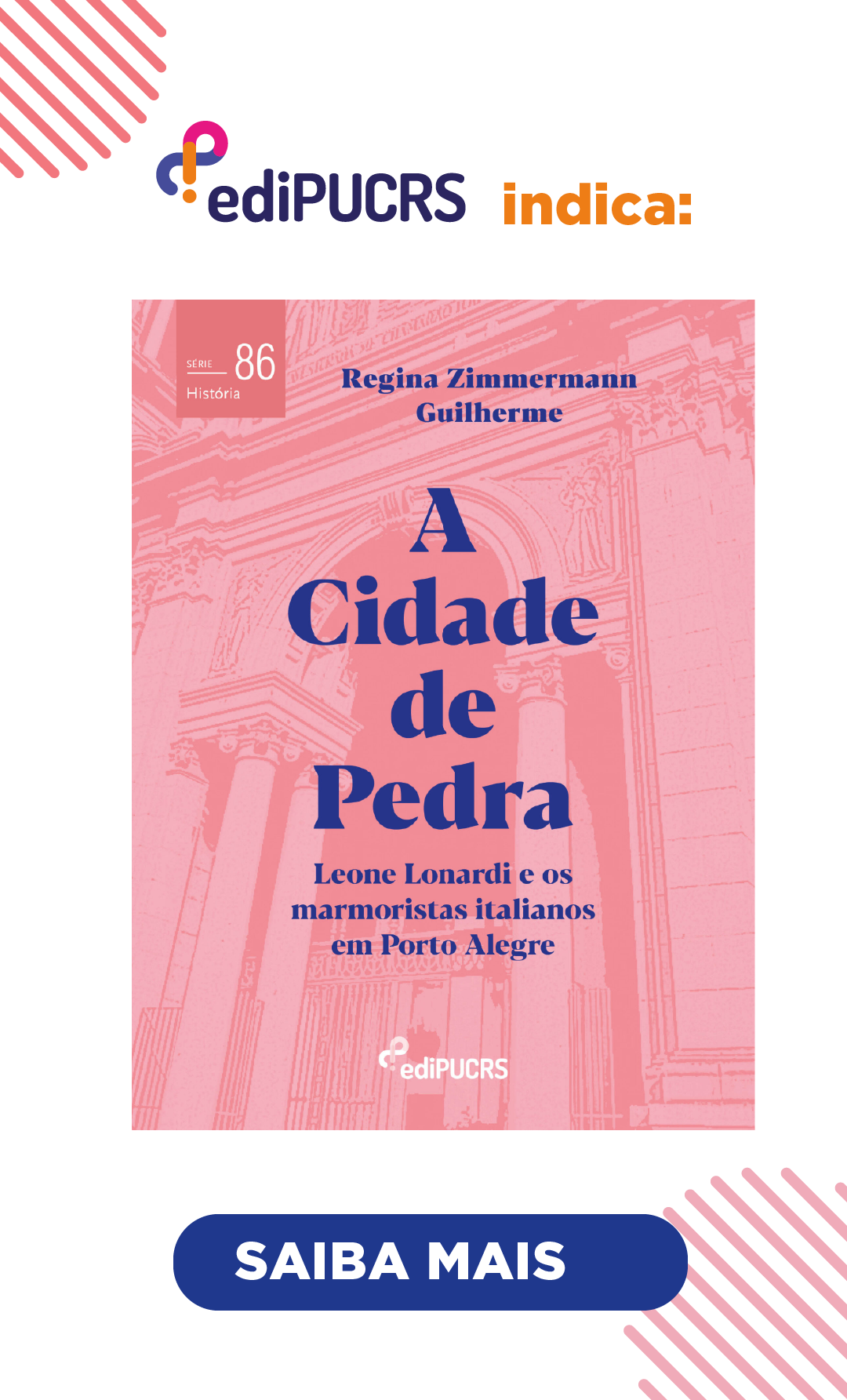History of the Present Time, the Shoah and paratranslation
The process of constructing narratives about the genocide
DOI:
https://doi.org/10.15448/1980-864X.2023.1.43357Keywords:
present time, Holocaust, paratranslation, genocidesAbstract
This paper aims to study the relationship between the history of the present, Holocaust studies and paratranslation, as well as to prove how the different analysis carried out by investigations about genocides have considered these fields of study. Through a bibliographic perspective and having gathered several papers throughout the second half of the 20th and 21st centuries, our standpoints have focused on finding the historical relationship between the mentioned fields, highlighting the difficulties that each of them has had to emerge in time and space in terms of categories and concepts. In addition to the presentation of paratranslation as a multi-perspective approach, our goal has been to understand how a concept commonly associated with the linguistics field is connected to the history of the present and how both fields are interrelated with studies about the Shoah that, in a certain way, have been linked to the beginnings of these two approaches.
Downloads
References
ALLEN, W. S. A direita toma o poder. Rio de Janeiro, Editora SAGA, 1969.
ARENDT, Hannah. Elemente und Ursprünge totales Herrschaft. Antisemitismus, Imperialusmus, Totalitarismus. München: Piper, 2017.
BAUER, Yehuda. Rethinking the Holocaust. EUA: Yale University Press, 2001.
BÉDARIDA, François. Le temps présent et l’historiographie contemporaine. Paris : Vingtième Siècle. Revue D’Histoire, 2001/1 (n 69) pp. 153-160.
BONNAUD, Robert. Le système de l’histoire. Paris : Fayard, 1989.
BRACHER, Karl Dietrich. The Germany Dictatorship. EUA: Holt Rinehart & Winston, 1972.
BRAUDEL, Ferdinand. La Méditerranée et le monde méditerranéen à l'époque de Philippe II. Paris: Armand Colin, 1966.
BROWNING, C. Ordinary men: Reserve Police Battalion 101 and the Final Solution in Poland. EUA: Harper Collins, 2017.
CATE, J. H. t. "THE FUTURE OF HOLOCAUST STUDIES." Jewish Political Studies Review 22(1/2): 33-41, 2010.
COUTO, Mia. O Mapeador de Ausências. Lisboa: Editorial Caminho, 2020.
DUCLERT, V. Le Point Sur. Histoire. Documentation Photographique. Paris, CNRS. 01: 63, 2019.
DA SILVA, Francisco Carlos Teixeira; SCHURSTER, Karl. Passageiros da Tempestade. Fascistas e Negacionistas no Tempo Presente. Recife: CEPE, 2022.
DINER, Dan. Jahre der Vernichtung. In: Die Welt. https://www.welt.de/print-welt/article156305/Jahre-der-Vernichtung.html Acessado em 23/05/2022.
FRÍAS, J. Y. Leer e interpretar la imagen para traducir. Trabalhos em Lingüística Aplicada 50: 257-280, 2011.
FRÍAS, José Yuste; VILLARIÑO, Xoán Manuel Garrido. (Orgs). Traducción & Paratraducción. Líneas de investigación. Berlin: Peter Lang: 2022.
FRIAS, José Yuste; VILARIÑO, Xoán Manuel GARRIDO. Traducción & Paratraducción (T&P). Mucho más que un grupo de investigación. In: YUSTE FRIAS, José; VILARIÑO, Xoán Manuel GARRIDO. TRADUCCIÓN & PARATRADUCCIÓN. Líneas de Investigación. PETER LANG: Berlin, 2022.
FRIEDLANDER, Saul. Réflexions sur le nazisme. Paris, Seuil, 2017.
FRIEDLANDER, Saul. The Years of Extermination. EUA: 2007.
GROSS, Jan T. Neighbors. The Destruction of the Jewish Community in Jedwabne, Poland. Princeton University Press, 2000.
GUATTARI, F. Molecular Revolution: Psychiatry and Politics. EUA, Penguin; Reprint edition, 1984.
HILBERG, Raul. Memorias de un historiador del Holocausto. Barcelona: Arpa, 2019.
HILBERG, Raul. Die Vernichtung der europäischen Juden. Deutschland: Fischer, 1990.
MUDDE, Cas. O regresso da ultradireita. Da direita radical à direita extremista. Lisboa: Editorial Presença, 2020.
NEUMANN, Franz. Behemoth. Struktur und Praxis des Nationalsozialismus. Frankfurt: Fischer, 1984.
PIMENTEL, Irene Flunser. História e Holocausto – estudar o passado e conhecer os assassinos. In: https://www.publico.pt/2018/01/14/mundo/noticia/historia-e-holocausto-estudar-o-passado-conhecer-os-motivos-dos-assassinos-1798790 Acessado em 16/09/2021.
PINTO, Antônio Costa. O regresso das ditaduras? Lisboa: Fundação Francisco Manuel dos Santos, 2021.
PIMENTEL, Irene Flunser. Holocausto. Lisboa: Temas e Debates, 2020.
POLIAKOV, Léon. Le Bréviaire de la Haine. Paris : Calmann-Levy. 1951.
REITLINGER, Gerald. The final solution. The attempt to exterminate the Jews of Europe 1939-1945. Beechhurst Press, 1953.
SCHÄFER, Wolf. Global History and the Present Time. New York: Stonybrook University, p. 103. In: www.stonybrook.edu›globalhistory›PDF›GHAndThePresentTime. Accedido el 23/05/2022.
SCHEFFLER, Wolfgang. Judenverfolgung Im Dritten Reich, 1933-1945. Berlin: Verlag, 1960.
TOMICH, Dale. A Ordem do Tempo Histórico: a Longue Durée e a Micro-História. Almanack [online]. 2011, n. 2 [Accessed 23 May 2022], pp. 38-52.
TOYNBEE, A. Massacres des Arméniens : le meurtre d'une nation 1915-1916 (Les). Paris, PAYOT, 2012.
VILARIÑO, Xoán Manuel GARRIDO. Paratraducción: la traducción hecha realidad. In: YUSTE FRIAS, José; VILARIÑO, Xoán Manuel GARRIDO. TRADUCCIÓN & PARATRADUCCIÓN. Líneas de Investigación. PETER LANG: Berlin, 2022.
VILARIÑO, X. M. G. Traducir a Literatura do Holocausto: Traduccion/Paratraduccion de “Se questo e un uomo” de Primo Levi. Escuela Internacional de Doctorado, Universidade de Vigo, 2005.
Downloads
Published
How to Cite
Issue
Section
License
Copyright (c) 2023 Karl Schurster e Óscar Ferreiro-Vázquez

This work is licensed under a Creative Commons Attribution 4.0 International License.
Copyright
The submission of originals to Estudos Ibero-Americanos implies the transfer by the authors of the right for publication. Authors retain copyright and grant the journal right of first publication. If the authors wish to include the same data into another publication, they must cite Estudos Ibero-Americanos as the site of original publication.
Creative Commons License
Except where otherwise specified, material published in this journal is licensed under a Creative Commons Attribution 4.0 International license, which allows unrestricted use, distribution and reproduction in any medium, provided the original publication is correctly cited.





